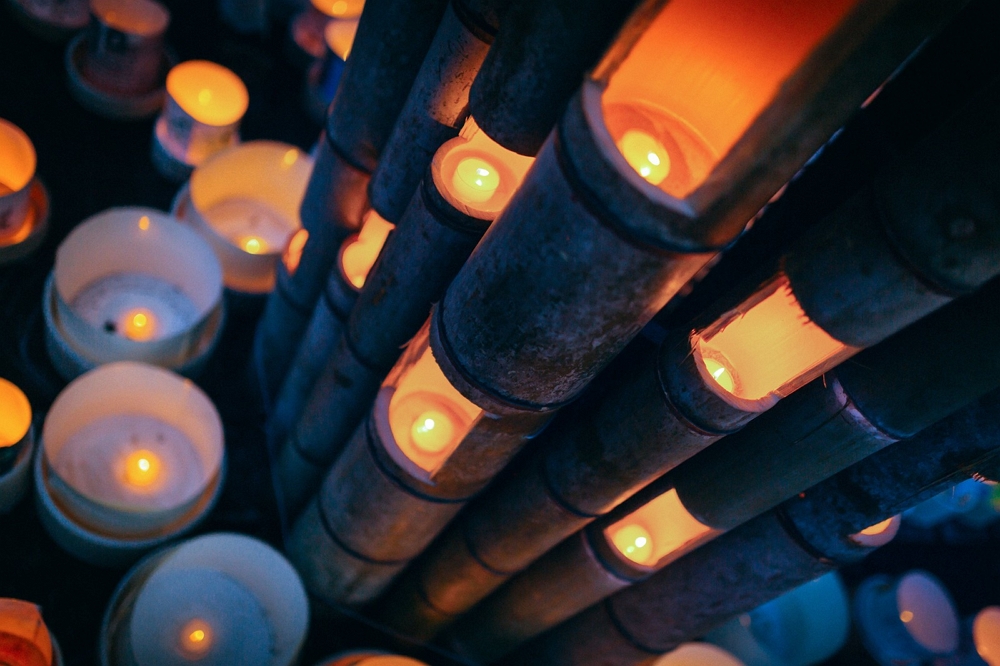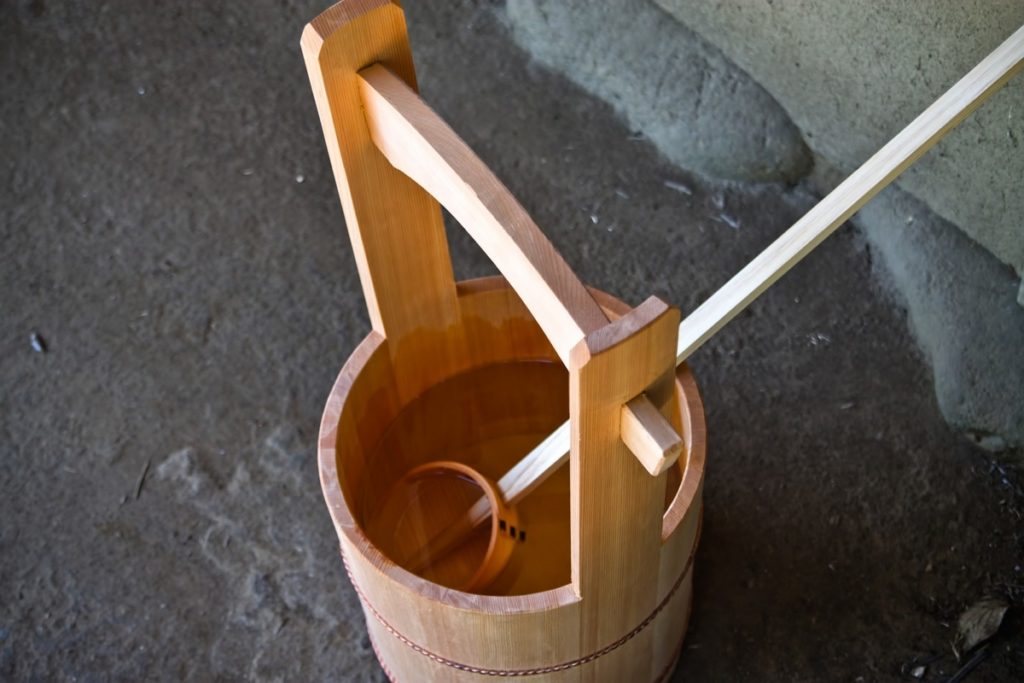The holiday “Bon festival”, also know as “Obon” has just began, but I was not aware of it until my Japanese friend sent me a message, saying that she is off for six days starting from today!
“Obon (or Bon) is a Japanese custom to worship the spirits of ancestors. Bon Festival is one of the three major holidays in Japan. Japanese will usually return to their hometown to show the respect and sweep the grave of their ancestors. It is not listed as national holiday in Japan, but as a custom, most companies make it a holiday. So every year at this period people are busy in movement from one place to another, which makes it difficult to get a seat of Shinkansen. Also, all tourist attractions are full of people and the prices of accommodation are particularly expensive.
Due to the impact of coronavirus year, Japanese government has been telling people that it is an unique year to celebrate bon festival this year, so please try not to return to hometown or travel, especially with the confirmed cases increase a lot in Tokyo these few weeks.
The younger Japanese tend to work in the big city like Tokyo and usually return to their hometown to gather with their elder parents or grandparents at bon festival holiday. Movement under the pandemic of coronavirus has the risk to bring it back to their beloved elders unconsciously because it is just too contagious. They keep saying that “Do not make yourself sick but also do not make others sick!”
I saw a evening TV news reported that the utilization rate of free seats on the Shinkansen was only 20% and the reservation for domestic flights was only about 40% compared to the same time last year.
The origin of bon festival
“Bon” festival is also read as “obon” in Japanese. The origin of the name is related to the Buddhist story “Mulian Rescues His Mother”.
“Mulian” is a disciple of Buddha Shakyamuni, who gained the power to see the world of the “six classes of beings” through practice. (The six classes of beings are hell beings, hungry ghosts, animals, human beings, and demi-gods.)
When Mulian looked at the class of Hungry Ghosts with his power, he just saw his mother who was condemned to the lowest and most painful purgatory in karmic retribution for her transgressions. She was hung upside down and reduced to a skeleton. Mulian puts rice in a bowl and wants to feed her mother, but the rice always turns into charcoal as soon as it is put into her mouth. He offers her mother some water, but the water always turns into a flame. No matter what he does, he cannot let her eat or drink.
Mulian asked Buddha Shakyamuni for help, but because her mother’s sin was too deep, the effort of an individual is hard. Buddha instructed him to offer gift and food to monks and monasteries on the fifth day of the seventh lunar month, which is just before the end of the rainy season. So Mulian happily held an obon on July 15, so that his mother was saved.
Obon was originally set on July 15 of lunar calendar, but it happened to be during the busiest agricultural season. So many areas postpone about a month, to set August 15 as “Obon”, so that people can do the ceremony.
When is bon festival holiday
Although Obon is not set by the Japanese government as a national holiday, it is customary in Japan that most companies give summer vacation during this period! It is usually from July 13th to 16th. Some big companies will even give longer days starting from the previous Saturday to make it a consecutive long holidays! For those who don’t have the benefits, sometimes people will take the opportunity to use their annual leave, and to make it a longer holiday for about 9 days!
August 11th is a national holiday “Mountain Day”. This year, 2020, was originally scheduled to host the Olympic Games, so the date of this year’s “Mountain Day” was adjusted from August 11 (Tuesday) to August 10 (Monday).
Bon Festival in August is one of the three major holidays in Japan. The other two are the New Year and the Golden Week, which is at the end of April and the beginning of May. During these periods, it is basically difficult to find a seat for the Shinkansen, especially for the first and last days of travel.
Many foreigners seem not know the Obon festival holiday when planning a trip to Japan, as it is not set as a national holiday on calendar in Japan. August happens to be the summer vacation in many countries, so if you plan to visit Japan in summer, be noticed of it.
Bon festival custom: gift-giving
In the past, freshman in the company had the habit of gift-giving to their bosses during the Bon festival, as a sign of gratitude and to maintain good relationship. Now, some companies, especially large companies, prohibit the custom of gift-giving. Civil servants are strictly prohibited from giving gifts to and from any interested parties.
Of course, there are still other companies that keep the custom of gift-giving on the Bon festival. It is better to ask the seniors in the company.
Choosing gifts suitable for Bon festival also have some tips. Major supermarkets and department stores or shopping websites usually start to promote the goods of Bon festival a few months earlier, and the supermarket usually start to display these goods one or two months earlier.
In terms of gift-giving, biscuits are always popular, especially when they are in small packages, so that one does not have to worry about the date of expiration. It is also better that gifts are consumables, so it will be gone after eating and will not take up space. As you may know, space is small in general in Japan. So the biscuit box is always the most popular one. It is also convenient to be divided to everyone after the family gathering for the worship.
What do people do at Bon festival
“Welcome fire” and “Farewell fire”
The activities of the Bon Festival include “mukae-bi” (welcome fire) and “okuri-bi” (farewell fire).
Mukae-bi is the fire to welcome the spirits of ancestors from the afterworld. It is held on the evening of August 13th.
Okuri-bi is the fire to send the spirits of ancestors pff to the afterworld. It is held on the evening of August 16th.

“Mukae-bi” is that when the spirits of ancestors return home from afterworld, they can return home smoothly without getting lost, so people will light the fire for leading the way. People used to bring lanterns to the tombs of their ancestors, then lighted a lantern, took it home, and then transferred the fire in the lantern to the candles on family Buddhist altar “butsudan” at home.
Nowadays, unlike the agricultural society in the past, the tombs of ancestors are usually far away, so it is difficult to perform like the way in the past. (Uh… travel with fire? It will probably be accused the crime of causing the public in danger!?) So people will burn some bundled up hemp reed “ogara” at the entrance of the house to symbolize the welcome fire!
Okuri-bi is the fire that to send ancestors off to their afterworld smoothly. In the past, the candlelight in the Buddhist altar at home was transferred to the lantern first, then be brought back to the tomb of the ancestor, and the fire was extinguished in front of the tomb, which meant sending off the spirit of the ancestor.
It’s also difficult to be performed now, so the ceremony became that people burn some bundled up hemp reed “ogara” at the entrance of the house again to symbolizes the farewell fire!
However, for those who live in tall buildings, it’s really scary to ignite the fire at the door (not to mention it is likely to activate the sprinkler system of the building!?), so it becomes to take the lamps placed in the Buddhist altar to the entrance, and then to bow or nod head showing the welcome and farewell to the spirits of ancestors.
Bon festival dance “Bon-odori”
The origin of the unique Japanese Bon festival dance is also related to Buddhism. It is said that at first it might be from the monk stood slowly reciting Buddhist scriptures, witch dance of Japanese Shintoism, and then evolved into the current style of Bon dance.
Bon festival dance is a popular summer activities in Japan. Each town usually has Bon dance activities. It is a happy time that a family join the Bon festival dance for better communication and relationship with neighborhood. It is free and anyone who lives in the town can join.
The classic Bon dance music sounds like lively ceremonial music. Usually people form a circle. If there are many people, they may form circles within circles. The Bon dance repeats the same rhythm with the beat, and is a bit like a folk dance. Free to join and to rest!
Meanwhile, the surrounding ground is often covered with blue plastic picnic sheets. Everyone sat on the ground in small groups, drinking, eating and chatting, and after having enough rest, they went up to dance. At this time, there are many people wearing Japanese summer kimono “yukata”! When I lived in Tohoku area, I participated several times and was very impressed.
Tomb sweeping “Ohaka-mairi”
Tomb sweeping, as the name implies, is to clean the ancestors’ tombs, weeds, tombstones, decorate with flowers and offerings…etc.

In Short
Now during the Japanese Obon (Bon festival), what people do is:
- Go back home to visit the grave
- Go back home
- Visiting relatives and friends at home
- Go on a trip or play at the beach
- Go to various summer festivals or events
- Travel abroad……